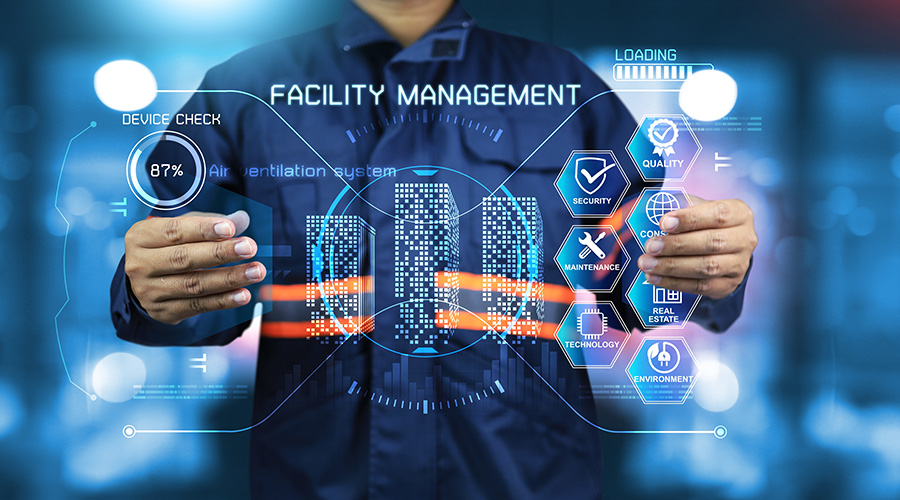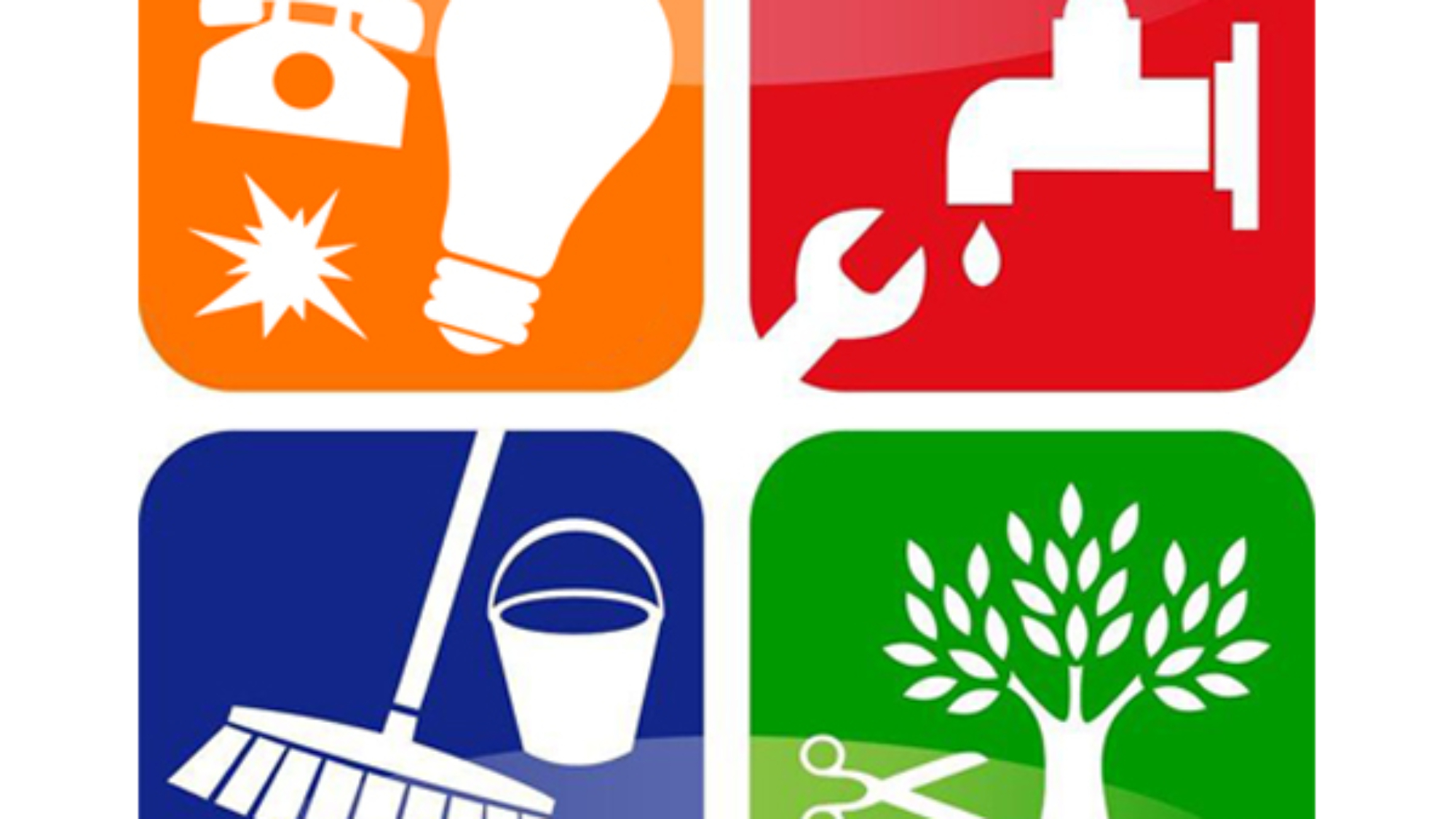Facility Management-- Streamlined Workflow and Expense Cost Savings
Wiki Article
Key Trends Shaping the Future of Facility Administration in 2024
As we look in advance to 2024, the landscape of center monitoring is poised for significant improvement, driven by several crucial trends. The combination of smart building modern technologies and a shift towards data-driven decision-making guarantee to improve operational efficiency while prioritizing sustainability in practice. Furthermore, the emergence of crossbreed job models is improving office atmospheres, demanding innovative design services that accommodate developing staff member requirements. In the middle of these adjustments, the emphasis on owner health remains to gain traction, highlighting the importance of a healthy office. How these patterns will materialize in technique remains a critical question for sector experts.Smart Building Technologies

Smart building technologies include a broad array of systems, consisting of intelligent illumination, heating and cooling controls, and security systems. By integrating these systems, center managers can keep track of and adjust parameters in real-time, resulting in substantial decreases in power waste and functional costs. Smart sensing units can discover occupancy degrees and change illumination and temperature appropriately, guaranteeing that power is just made use of when needed.
Additionally, these modern technologies facilitate enhanced information collection, allowing companies to track use patterns and recognize possibilities for more renovations. The execution of smart building innovations not only adds to sustainability objectives yet likewise develops much healthier job settings that can improve staff member performance and fulfillment.
As we move right into 2024, the fostering of wise structure innovations will likely speed up, showing a more comprehensive change towards more smart, responsive, and sustainable center management techniques.
Data-Driven Decision Making
Significantly, organizations are leveraging data-driven choice making to improve center monitoring techniques. By taking advantage of information analytics, center supervisors can obtain actionable understandings that significantly boost operational efficiency and source appropriation. The integration of advanced innovations, such as IoT sensing units and real-time tracking systems, makes it possible for the collection of huge amounts of information on structure performance, occupancy rates, and power usage.This wealth of info enables center managers to recognize fads, anticipate upkeep demands, and proactively address problems prior to they rise. For example, anticipating analytics can forecast devices failings, minimizing downtime and fixing expenses. In addition, information visualization tools assist in much better communication among stakeholders, guaranteeing that notified choices are made collaboratively.
In addition, data-driven strategies boost calculated preparation by making it possible for facility managers to examine the performance of current techniques and make informed selections regarding investments in technology or framework. As organizations progressively focus on functional quality, data-driven decision making is positioned to end up being a foundation of effective facility administration techniques in 2024 and past. Ultimately, the ability to leverage data successfully will empower organizations to create much more effective, effective, and durable centers.
Sustainability and Green Practices
The focus on data-driven decision making normally aligns with the expanding emphasis on sustainability and green practices within center monitoring. As companies progressively focus on environmental obligation, center managers are leveraging analytics to maximize resource usage, decrease waste, and reduce carbon impacts. This tactical method allows the combination of energy-efficient systems, such as LED illumination, clever cooling and heating controls, and renewable resource resources into center procedures.Furthermore, the execution of lasting practices prolongs past energy consumption. Facility managers are advertising and embracing environmentally friendly products reusing campaigns to develop a round economic situation within their centers. This not just enhances the environmental profile of the company but likewise fosters a culture of sustainability among workers.
Conformity with ecological regulations is one more crucial element driving the adoption of eco-friendly practices. By making use of information analytics, center managers can keep track of compliance metrics and identify areas for renovation, making sure adherence to worldwide and regional sustainability Learn More Here requirements.
Crossbreed Work Versions
A considerable change in the direction of hybrid work versions is reshaping the landscape of center administration in 2024. This standard incorporates remote and in-office job, demanding a reevaluation of room usage, resource allocation, and worker engagement approaches. Organizations are significantly identifying the importance of adaptable work areas that satisfy varied needs and preferences.Center managers should adapt by carrying out versatile office styles that support collaborative efforts while offering areas for concentrated job. This consists of the integration of modern technology to assist in seamless communication and cooperation amongst in-office and remote workers. Smart building solutions, geared up with sensing units and analytics, enable real-time monitoring of room usage, enabling companies to maximize their environments effectively.
Moreover, crossbreed work models emphasize the need for efficient center monitoring that focuses on employee experience. This encompasses not only modern technology and room style however additionally the growth of plans that advertise a balanced work-life dynamic. As companies navigate this change, the function of facility monitoring comes to be critical in developing a nimble office that promotes efficiency and drives business success. Basically, the crossbreed job version is reinventing center administration, motivating an aggressive approach to satisfy the advancing demands of the labor force.
Boosted Occupant Wellness
As organizations embrace hybrid job versions, an increased emphasis on occupant health is becoming essential to facility management strategies. Facility Management. This change acknowledges that a pleased and healthy and balanced labor force directly influences productivity and retention rates. Facility managers are now focusing on settings that advertise physical and psychological wellness, incorporating elements such as all-natural illumination, biophilic layout, and accessible wellness sources

Technology plays a vital this post duty in this evolution. Smart building systems can keep track of ecological factors and adjust settings in real-time, making sure optimal convenience degrees - Facility Management. Furthermore, responses systems, such as tenancy sensors and staff member surveys, enable facility supervisors to continuously fine-tune wellness initiatives based on resident requirements.
Conclusion
In 2024, the future of facility management will certainly be considerably affected by the assimilation of clever building modern technologies and data-driven decision-making, promoting enhanced operational performance. Sustainability efforts will prioritize eco-friendly techniques, while the development of hybrid job designs will certainly require adaptable workplace layouts. An enhanced emphasis on passenger health through advanced HVAC systems and biophilic style will certainly contribute to much healthier job environments. These patterns jointly highlight the developing landscape of facility monitoring in action to contemporary difficulties and possibilities.Center managers are promoting and taking on eco-friendly products recycling efforts to create a circular economic situation within their facilities.A considerable change towards hybrid job designs is improving the landscape of facility management in 2024.In addition, hybrid job models emphasize the requirement for effective center management that prioritizes employee experience.As organizations welcome hybrid anchor work designs, an increased emphasis on resident wellness is ending up being essential to facility management methods.In 2024, the future of center management will be dramatically affected by the combination of clever structure modern technologies and data-driven decision-making, promoting enhanced functional performance.
Report this wiki page